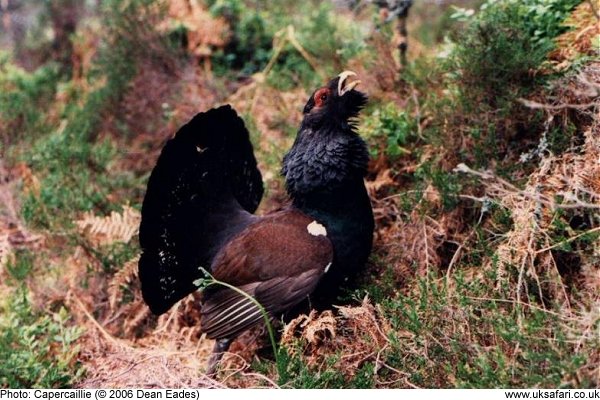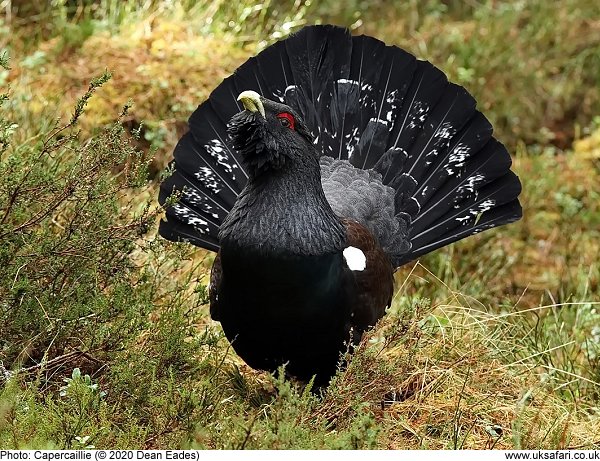 Quick Facts
Quick Facts
Scientific name: Tetrao urogallus
Size: Up to 85cm
Distribution: Rare. Confined to forests of north Scotland
Months seen: All year round
Habitat: Caledonian scots pine forests
Food: Seeds, pine needles and buds
Special features: Despite being the size of a turkey, the Capercaillie is notoriously difficult to spot in it's native habitat. Also famed for its call which sound like a cork popping from a bottle.
The male capercaillie has black plumage which has an irridescent green sheen. The wings are dark brown and there is a small white patch on each shoulder. The undersides of the wings and rump are also white. The beak is a greyish white.
The female Capercaillie has orange-brown coloured plumage which is heavily marked with black bars. The beak is grey.
 Related Pages
Related Pages

 Popular Pages
Popular Pages
Amphibians, Bats, Badgers, Beetles, Birds, Birds of Prey, Bumble Bees, Butterflies, Caterpillars, Creepy-Crawlies, Deadly Spiders, Dolphins, Dragonflies, E-Postcards, False Widow Spiders, Free Newsletter, Frogs, Fungi, Garden Spiders, Glow-Worms, Grey Squirrels, Hedgehogs, House Spiders, Ladybirds, Mammals, Marine Mammals, Moths, Owls, Reptiles, Spiders, Toads, Trees, Wildlife Hospitals
Copyright © 2020 G. Bradley UK Safari. All rights reserved | About Us | Links | Contributors


 Capercaillie
Capercaillie



